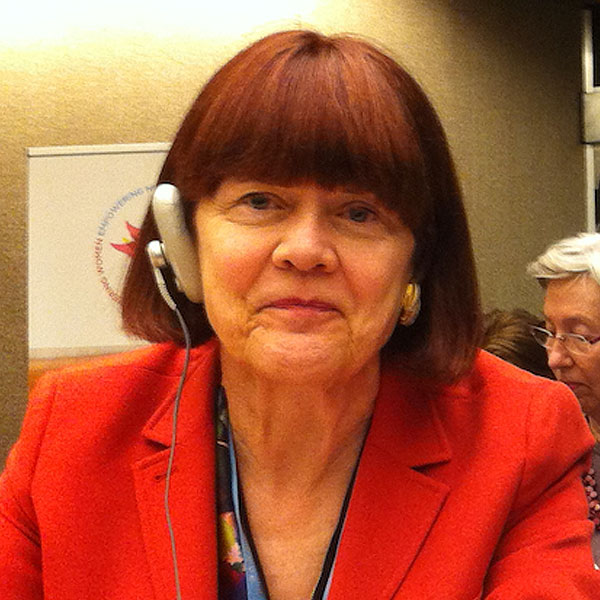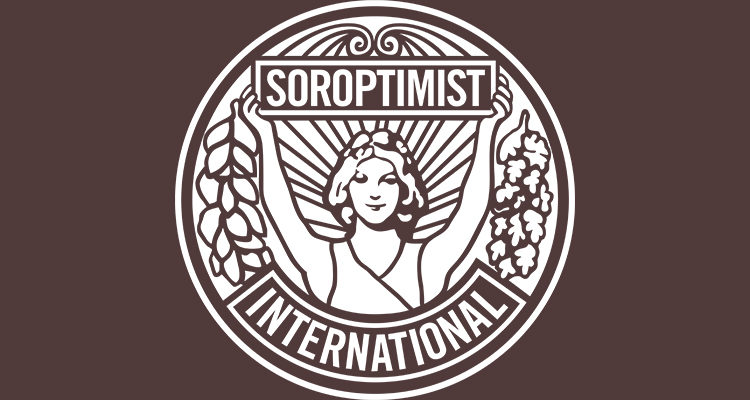 Special Advisor to SI Advocacy, Linda Witong, provides insight into the ‘World Drug Report: Women and Drugs’ from the United Nations Office of Drugs and Crime (UNODC).
Special Advisor to SI Advocacy, Linda Witong, provides insight into the ‘World Drug Report: Women and Drugs’ from the United Nations Office of Drugs and Crime (UNODC).
“Both the range of drugs and drug markets are expanding and diversifying as never before. The findings of this year’s World Drug Report: Women and Drugs [1] makes it clear that the international community needs to step up its responses to cope with these challenges. The report also emphasises the need to advance the goals of increasing support to countries that needed it most and of improving international cooperation and law enforcement capacities to dismantle organised criminal groups drug traffickers. The report offers guidelines on treatment and care for people with drug use disorders in contact with the criminal justice system. The World Drug Report 2018 also highlights the importance of gender- and age-sensitive drug policies, exploring the particular needs and challenges of women and young people.
The key findings within this report regarding women and their use of drugs were as follows:[7]
The prevalence of the non-medical use of opioids and tranquillisers among women remained at a comparable level to that of men, if not actually higher. On the other hand, men are far more likely than women to use cannabis, cocaine and opiates. While women who use drugs typically begin using substances later than men, once they have initiated substance use, women tend to increase their rate of consumption of alcohol, cannabis, cocaine and opioids more rapidly than men. This has been consistently reported among women who use those substances and is known as “telescoping”. Another difference is that women are more likely to associate their drug use with an intimate partner, while men are more likely to use drugs with male friends.
Internalising problems such as depression and anxiety are much more common among women than among men.In addition, Women with substance use disorders are reported to have high rates of post-traumatic stress disorder and may also have experienced childhood adversity such as physical neglect, abuse or sexual abuse. Women who use drugs may also have responsibilities as caregivers, and their drug use adversely affects their families, in particular children. Such adverse childhood experiences can be trans-generational and impart the risks of substance use to the children of women with drug use disorders.
Post-traumatic stress disorder among women is most commonly considered to have derived from a history of repetitive childhood physical and sexual abuse. Childhood adversity seems to have a different impact on males and females. Research has shown that boys who have experienced childhood adversity use drugs as a means of social defiance. On the other hand, girls who have experienced adversity are more likely to internalise it as anxiety, depression and social withdrawal and are more likely to use substances for self-medication.
Gender-based violence comprises multiple forms of violence against women, including childhood sexual abuse, intimate-partner violence, non-partner assault as well as trafficking in women and their sexual exploitation. Some studies show that women who use drugs have a two to five times higher prevalence of gender-based violence than women (who do not use drugs) in the general population.
Women make up one third of drug users globally and account for one fifth of the global estimated number of People Who Inject Drugs (PWID). Women have a greater vulnerability than men to HIV, hepatitis C and other blood-borne infections. Many studies have reported female gender as an independent predictor of HIV and/or hepatitis C among PWID, particularly among young women and those who have recently initiated drug injection.
The list continued by observing that:
Women played important roles throughout the drug supply chain. Criminal convictions of women who presided over international drug trafficking organisations particularly in Latin America, but also in Africa — attest to this. Women’s involvement in opium poppy cultivation in Afghanistan and coca cultivation in Colombia is well documented, as is the role that women play in trafficking drugs, as drug “mules”.[8]
However, there is a lack of consistent data from Governments to enable a deeper understanding of those roles: 98 countries provided sex-dis-aggregated drug-related crime data to United Nations Office of Drugs and Crime for the period 2012–2016. Of the people arrested for drug-related offences in those countries during that period, some 10 per cent were women.[9]
As suggested in several studies, women could also become involved in drug trafficking to sustain their own drug consumption; however, as shown in other studies, some women involved in trafficking in drugs are victims of trafficking in persons, including trafficking for the purposes of sexual exploitation. Women’s participation in the drug supply chain can often also be attributed to vulnerability and oppression, where they are forced to act out of fear. Moreover, women may accept lower pay than men: some researchers have noted that women may feel compelled to accept lower rates of payment than men to carry out drug trafficking activities, which means that some drug trafficking organisations may be more likely to use women as “mules”.
Another narrative has emerged critiquing this approach and arguing that women might be empowered key actors in the drug world economy. Cases have also been documented in which women are key actors in drug trafficking, by choice. Neither explanation provides a complete picture of women’s involvement in the drug supply chain — some are victims, others make their own decisions. Involvement in the illicit drug trade can offer women the chance to earn money and achieve social mobility, but it can also exacerbate gender inequalities because they may still be expected to perform the traditional gender roles of mothers, housekeepers and wives.[10]
Overall, although a multiplicity of factors are behind the participation of women in the drug trade, it has been shown to be shaped by socioeconomic vulnerability, violence, intimate relationships and economic considerations.[11]
The proportion of women sentenced for drug related offences is higher than that of men. In some countries, drug-related offences account for the first or second cause of incarceration among women and between the second and fourth cause among men, who are more often incarcerated for other crimes. [12]
It has been argued that, as a result of the targeting of low-level drug offences, women may be disproportionately incarcerated for drug offences. Women often suffer more than men with serious long-term consequences from incarceration that affect several aspects of their lives. In most instances, on the basis of gender-neutral principles, women are subject to the same correctional procedures as men, which do not take the particular aspects of gender into consideration.[13]
Women who are incarcerated have even less access than their male counterparts to health-care services to address their drug use, other health conditions and sexual and reproductive health needs. In addition, fewer women than men generally receive enough preparation and support for their return to the family or to the community in general.[14]
Upon release from prison, women face the combined stigma of their gender and their status as ex-offenders and face challenges, including discrimination, in accessing health care and social services. They may also face social isolation, leaving them to continue living in circumstances of social and economic disadvantage and inequality.[15]
In March of 2019, the Ministers and government representatives participating in the ministerial segment of the sixty-second session of the Commission on Narcotic Drugs, met at the United Nations in Vienna to take stock of the implementation of the commitments made over the past decade to jointly address and counter the world drug problem. They created a 2019 Ministerial Declaration on strengthening their actions at the national, regional and international levels to accelerate the implementation of their joint commitments to address and counter the world drug problem. Within this declaration it recognised the importance of appropriately mainstreaming a gender and age perspective into drug-related policies and programmes and that appropriate emphasis should be placed on individuals, families, communities and society as a whole, with a particular focus on women, children and youth, with a view to promoting and protecting health, including access to treatment, safety and the well-being of all humanity.
The Ministerial Declaration also again expressed concern regarding the persistent and emerging challenges related to the world drug problem, including the following:
- That both the range of drugs and drugs markets were continuing to expand and diversify.
- That the abuse, illicit cultivation and production and manufacture of narcotic drugs and psychotropic substances, as well as the illicit trafficking in those substances and in precursors, have reached record levels, and that the illicit demand for and the domestic diversion of precursor chemicals are on the rise.
It also expressed concern over the increasing links between drug trafficking, corruption and other forms of organised crime, including trafficking in persons, trafficking in firearms, cybercrime and money-laundering and, in some cases, terrorism, including money-laundering in connection with the financing of terrorism.
They also expressed concern regarding the fact that the value of confiscated proceeds of crime related to money-laundering arising from drug trafficking at the global level remained low.
This was unfortunate as they could have used this recovered money to address another area of concern i.e. that the availability of internationally controlled substances for medical and scientific purposes, including for the relief of pain and palliative care, remained low to non-existent in many parts of the world and that, as drug treatment and health services continued to fall short of meeting needs, deaths related to drug use have increased and that the rate of transmission of HIV, the hepatitis C virus and other blood-borne diseases associated with drug use, including injecting drug use in some countries, remained high.
They also noted with concern that the adverse health consequences of and risks associated with new psychoactive substances have already reached alarming levels and that synthetic opioids and the non-medical use of prescription drugs pose increasing risks to public health and safety.
Challenges also existed regarding scientific, legal and regulatory issues dealing with the scheduling of substances along with dealing with the increase in criminal misuse of information and communications technologies for illicit drug-related activities.
Finally, in addition to the challenge of obtaining geographical coverage and availability of reliable data on the various aspects on the world drug problem, it was observed that “responses were not in conformity” with the three international drug control conventions, applicable international human rights obligations. This was perceived as posing “a challenge to the implementation of joint commitments based on the principle of common and shared responsibility.”
[1] UNODC WOMEN AND DRUGS Drug use, drug supply and their consequences Preface pages 1-2 2018
[2] Ibid page 1
[3] Ibid page 1
[4] Ibid page 1
[5] Ibid page 1
[6] Ibid pages 1-2
[7] Ibid page 6
[8] Ibid pages 6-7
[9] Ibid page 7
[10] Ibid page 7
[11] Ibid page 7
[12] Ibid page 7
[13] Ibid page 7
[14] Ibid page 7
[15] Ibid page 7

